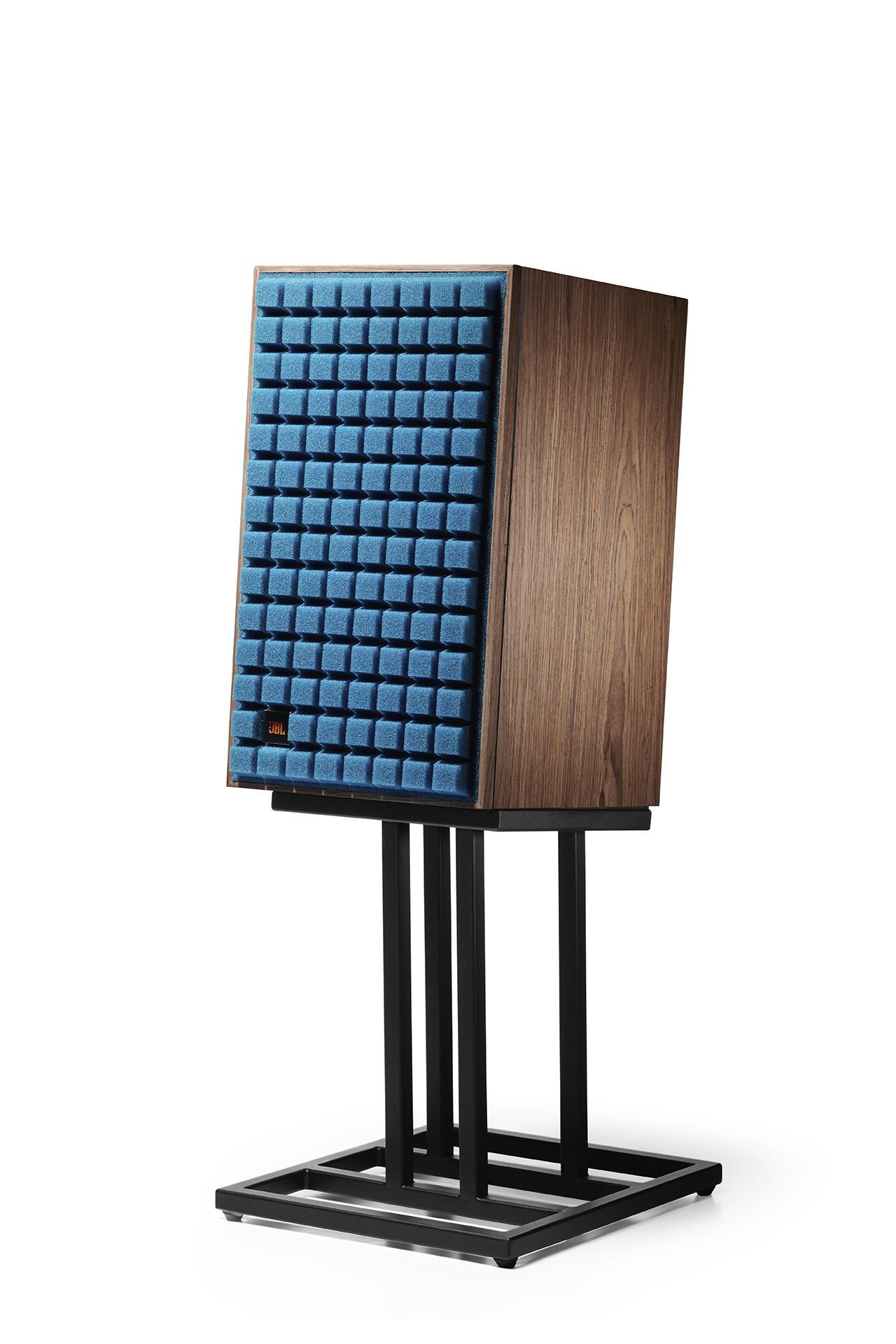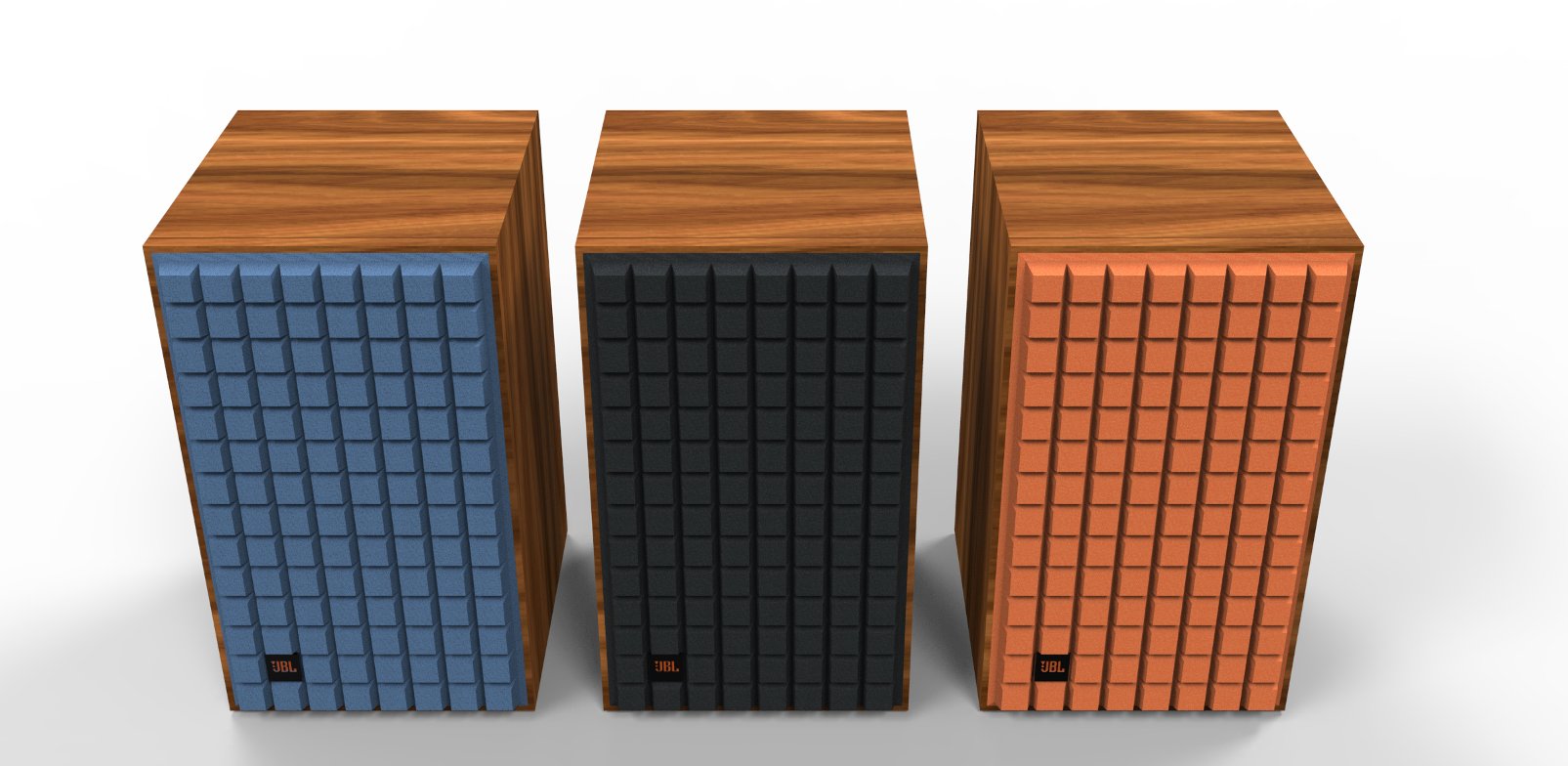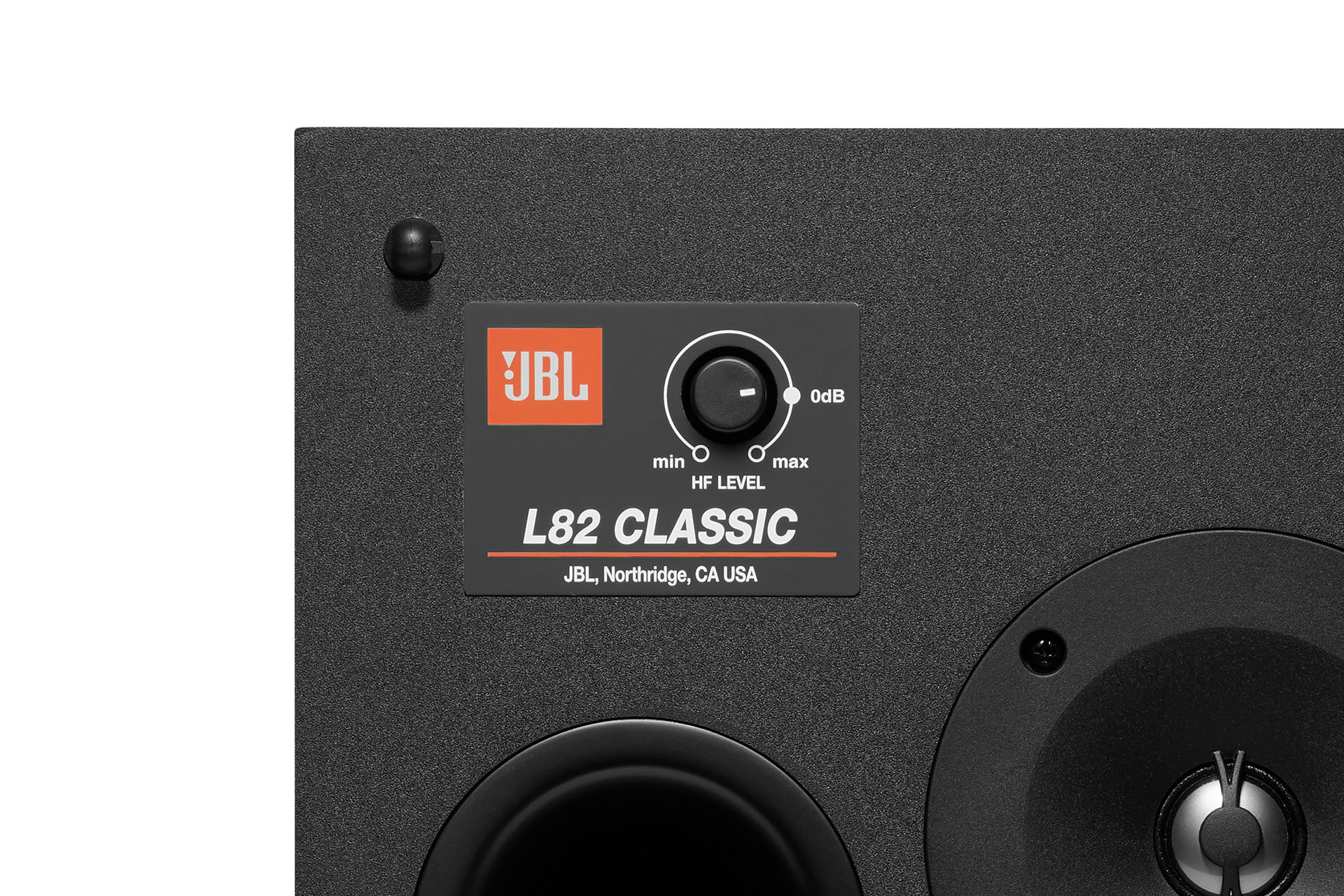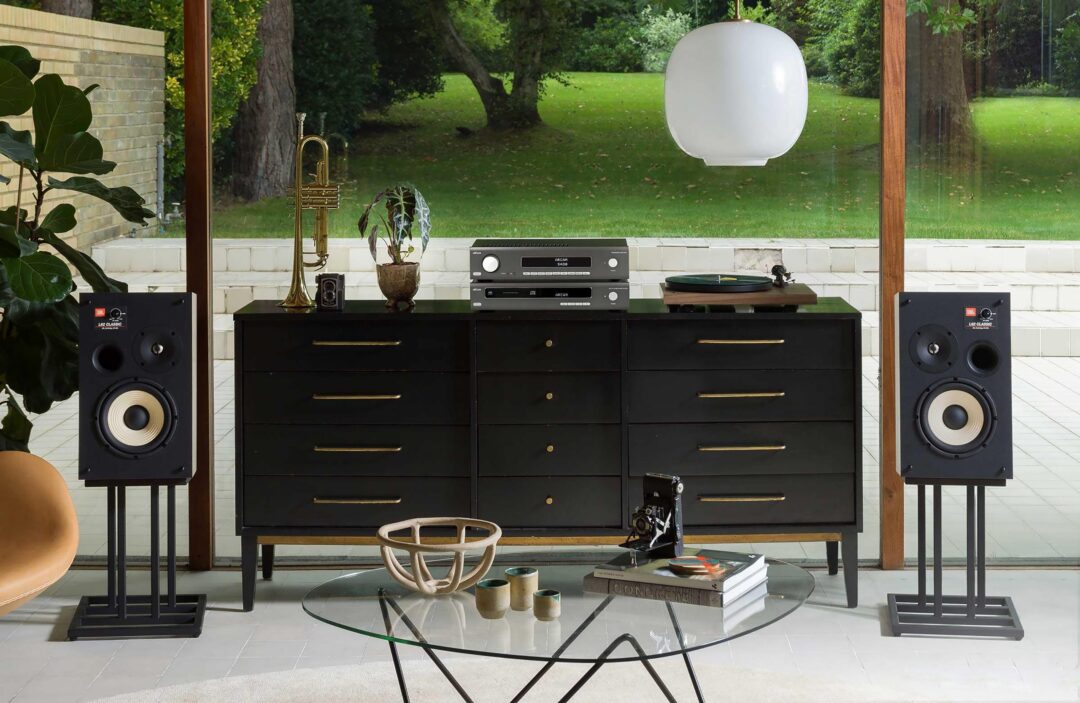I must admit that it was with a certain skepticism that I unpacked the new JBL Classic speakers in retro design. It helped a bit that the previous JBL speakers I tested – L100 Classic, had blown me off the chair when I tested them, so I had a glimmer of hope.
But I had historical reasons for the skepticism.
The new JBL L82 Classic follows the same template as the L100 Classic: Let a look back to old times form the inspiration basis for a new speaker series, and let’s call them, ehh… Classic.
Not very original, it must be said, but that sin is not JBL alone to do.
It can go well, and it got started with the L100 Classic, which is a fairly large three-way bookshelf speaker – even with the original Quadrex grills, and which needs a couple of racks to stand on.

While the larger L100 Classic is a modern – and far more playful – version of the original L100 Century, the smaller two-way L82 Classic is inspired by, among others, the L46 which was released in the early 80’s. It had similar equipment as this one, an 8-inch bass, and a 1-inch treble, in a medium-sized bass reflex cabinet.
It had its audible shortcomings.
Shoemaker, leave your last
But an L46 tempted me more than many other speakers at the time. Then I looked for a more forward and energetic speaker than the Advent speakers I played at the time, and since the larger L56 had a 10-inch bass, the choice fell on it instead of the smaller L46.
It blew the polite and well-balanced Advent speakers off the racks. Two 10-inches moved plenty of air in the small room they were standing in, and they could stand playing loudly. My ears did not. If you turned up the volume on the powerful Harman Kardon amplifier I used, it was both loud, tough – and sharp. It can be said that there was a lack of balance between the energy in the midrange, and the treble, on that generation of JBL speakers.
Fortunately, only the design of the L82 Classic is reminiscent of my old JBL speakers. They have the same white bass diaphragm with the bass port above, and a 1-inch tweeter.
That’s where the similarities stop. For these play far, far better than the original.
Complete redesign
The new version has a new 20 cm bass element with a knurled fiber membrane, with a rubber suspension at the front and a large swing coil in a powerful magnetic system. The element mounted on a cast chassis is screwed on with eight screws. Inside, the cabinet is reinforced with braces and moderate damping.
Next to the bass door in front is an asymmetrically placed 25 mm tweeter with titanium diaphragm (L46 and 56 had aluminum diaphragms). The diaphragm is lowered slightly in relation to the front plate, and has a small scattering lens in front.

The treble level can be adjusted at will with the small potentiometer at the top, and you may want to if you play with the elaborate Quadrex grills on. They attenuate the treble a little.
The speakers are too large to be placed on a shelf. JBL offers a pair of racks made for the speakers, which angles them slightly backwards. They can be placed close to the back wall, as you can feel the bass very well in the diaphragm, but I recommend pulling them out at least 50 cm, and angling them inwards towards the middle of the sofa. It gave the best balance in my listening room.
Let the good times roll!
Behind the silky matte black front, the cabinet is clad in real walnut veneer. The frame of the grill is made of a veneered MDF frame, and the Quadrex grill has far more durable foam plastic, available in black, blue or orange.
On the low JS-80 stands, the speakers look really retro, and I personally love it, but I can see why it is not everyone’s cup of tea. But watch some music and prepare to be blown off the chair.
I have never heard such a small two-way speaker with so much balanced dynamics. The sound balance tends a bit towards warm, but above all, full sound with a lot of bottom. The bass elements are not only powerful in the way they hammer out the drum beats or roll bass tones, you get the feeling of listening to a much larger speaker.
They almost disappear into the room, creating a huge canvas for Keith Jarrett’s concert piano to frolic on. Add drums and bass, and you have a trio, and the JBL speakers are at their ace here. The double bass is beautifully weighted in the bass, and the drums lay a powerful foundation in the soundscape, on which the piano sound almost floats away in the room.

The speakers give Nancy Wilson’s vocal spotlight in the middle of the speakers, quite far out on the floor, but the stereo perspective is not as solid as on the far more expensive Audiovector R1 Arreté. There is also not the same degree of sophistication and resolution in the treble, but it should just be missing. The JBL speakers are significantly cheaper.
Inn with Leonhard Cohen in live recording from London. I was not present, but it does not matter, because I can play that I am with the JBL speakers. Which creates an amazingly lifelike feeling, where you get to recreate the big stage the recording was made on.
A classic from the same time as the inspiration for the speakers, Dire Straits Love Over Gold (if I first heard on my own L46), sounds heavenly much better on the L82 Classic. They reproduce the guitar sound with far more depth and more nuance, there is a much sharper focus in the soundscape, and there is nothing shrill or sharp in the treble.
Nor does it on classical music, an Achilles heel for many older JBL speakers. The strings at Mozart’s clarinet concerto in A major (KV622, Philips 1971), appear well in the soundscape, and the clarinet sounds are deep, resonant and you can hear the air that penetrates through Jack Brymer’s instrument.
Maybe some will miss a little more airiness at the top of the treble, and a little more sophistication and sharpness of detail in the midrange, but other than that, the JBL speakers are a real pleasure to play music on. You will not find the joy of gaming in this price range.
Just try Tony Bennett and BB King in a duet on the classic, Let the good times roll, and you will quickly understand what I mean.
Competitors? Which competitors?
Believe me, I found it easy, but it has not been easy to find alternative speakers for the L82 Classic. The much smaller Piega Premium 301, are in the same price range and deliver the music on a polished silver barrel, but dynamically they are not close.
Bowers & Wilkins? 705 S2 is the closest you get, and they are better balanced and offer more sophistication, but gaming fun?
A few steps up the price ladder you will find the Dynaudio Special Forty, which is more transparent and fine-meshed, but without the crashing dynamics, and not at all the same depth in the bass as the JBL speakers.
Conclusion
The JBL L82 Classic is without a doubt the speakers that provide the most gaming pleasure for the money, in this price range. You can find more insight, sophistication and richness of detail in other compact speakers, but not the same playful dynamics and with as bold bass as here. You have to use larger floor-standing speakers to match the physical bass, and to get a sound image with the same scale. The JBL speakers are a triumph for the designers who have managed to put all prejudices to shame, and created believers by skeptics. May they last a long time.

We think
Powerful bold bass for such a small speaker, powerful dynamic contrast and wonderful retro look. Lots of speaker for the money. Detail freaks get more of it elsewhere.
2589 €
Specifications
- Type: Two-way compact speaker
- Bass: 20 cm fiber membrane
- Treble: 25 mm titanium membrane
- Sensitivity: 88 dB
- Impedance: 8 ohms
- Frequency response: 44Hz – 40kHz -6 dB
- Dimensions / weight: 47.3 x 28.1 x 3.5 cm / 12.7 kg
- Other: Walnut veneer, Quadrex grill in three colors
- Web: jblsynthesis.com

